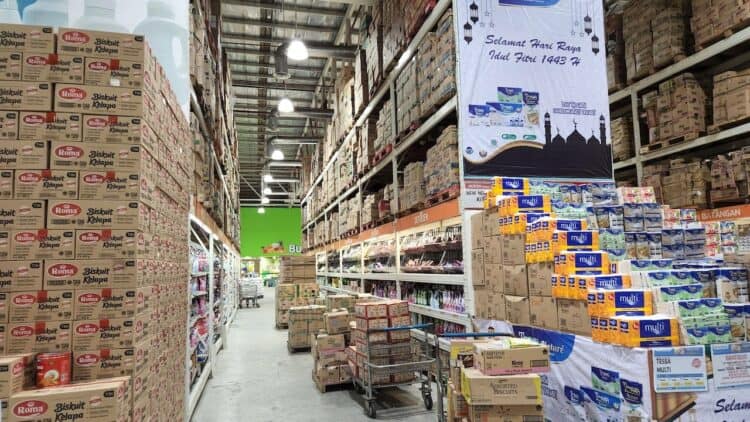Though the world of retail has been undergoing a digital transformation for some time, the COVID-19 pandemic essentially changed people’s habits, causing online shopping to go into overdrive over the last two years. Considering this, businesses that deliver seamless cross-channel shopping experiences are more likely to see increased success.
To keep up with renewed consumer demands and expectations, companies are increasingly investing in digital technologies such as new manufacturing methods, human-robot collaboration, and advanced analytics and intelligence to overcome supply chain disruptions and productivity challenges.
These businesses are supported by governments in the region, who have implemented progressive digitalisation plans to accelerate their digital economies, such as Singapore’s Smart Nation Plan and Australia’s Digital Economy Strategy.
However, despite having more data and workflows digitalised, complete confidence in the numbers reflected in inventory management systems is still lacking. Many businesses are not yet reporting 100% inventory accuracy or the ability to sense demand, which underlines that more work needs to be done to improve inventory planning.
Furthermore, according to Zebra’s 14th Annual Global Shopper Study, retail associates surveyed increasingly feel the pain of inventory issues, ranking it their top complaint. From the consumer’s point of view, inventory visibility is also key to shopper satisfaction, as it helps connect shoppers to what they want and gets them in the door in the first place.
As highlighted by my Zebra colleague Suresh Menon, senior vice president and general manager of software solutions, data fragmentation remains an issue for most organisations. Information systems are siloed both within and outside the four walls even though operational functions and supply chain organisations have become more co-dependent than ever.
Fortunately, the introduction of technologies such as read-to-cloud radio frequency identification (RFID) application programming interfaces (APIs), handheld RFID sleds and readers, and affordable RFID tags and labels has made it easier for retailers of all sizes to leverage RFID to improve operational visibility, inventory management and process execution.
RFID systems can automatically read thousands of tagged items and provide highly accurate information about the location of an item, helping to increase the accuracy and reliability of quality control and track and trace processes.
Beyond automating data capture
Online shopping in Southeast Asia is growing at a significant rate. In Singapore, Malaysia, Thailand, and Vietnam, the demand for both e-commerce and m-commerce is on a huge growth trajectory and is poised to be one of the fastest-growing markets in the world.
With the exponential rise of e-commerce activity, retailers in the region realised that they needed to employ technologies such as barcode-based track and trace solutions to keep up with renewed consumer demands.
With just a single scan, these solutions allow multiple data fields to be automatically and accurately captured, recorded, and effectively interpreted by the relevant stakeholders, such as inventory and operations managers, buyers, and planners.
The introduction of RFID technology has allowed data capture to be further automated. Thousands of tags could be read each second by fixed readers strategically placed throughout facilities or handheld readers operated by workers, and recorded data could be fed in bulk into inventory management systems with increased accuracy.
To be able to sense, analyse, and act on both supply and demand trends in real-time, automating data capture is not enough. Retailers need to start automating analytics too.
Making sense of inventory data
Real-time inventory transparency is key to making the right labour, procurement, merchandising, pricing, and promotion decisions which hardware components like barcode and RFID systems provide to a certain extent.
However, these hardware components still lack the ability to analyse, or action-captured data. As such, retailers need to invest in software and independent software vendors (ISV) to analyse the captured data.
Modern inventory management capabilities have greatly improved since cloud-based software-as-a-service (SaaS) platforms became available at scale. As structured and unstructured data generated by the Internet of Things (IoT) components can now flow freely through a data pipeline or directly to a data lake, APIs and machine learning algorithms can be leveraged more extensively to access and mine data in a cost-effective manner.
The system is designed so that anyone and everyone at each stage of the fulfilment process can plug into the same information systems via APIs and extract actionable insights most relevant to their roles.
Workflow applications can also be customised to help drive the best next actions from different stakeholders, including operations managers, associates, and delivery drivers. A prescriptive analytics platform, for example, can be taught to detect certain patterns in the data and assign tasks to employees anytime an inventory-related issue or opportunity arises.
Furthermore, an intelligent demand sensing platform can aggregate inventory data from multiple business systems and analyse it alongside external data such as weather, traffic, holidays, and other demand-influencing events to prescribe calculated best actions when it comes to procurement, merchandising, pricing, or promotion.
Designing a personalised inventory management system
Led by advancements in technology, the progressive shift in focus from automating data capture to data analytics has been key to improving inventory availability and performance in the last decade.
An improved inventory management system offers universal accessibility to workers who are increasingly mobile, even automating decision-making to a certain extent, removing manual processes and legacies from inventory planning and management.
Inventory transparency is a key pillar driving the future of store operations. When designing inventory-related solutions, retailers need to adopt a forward-thinking approach to store and inventory management. Moving forward, better inventory management tools will improve accuracy and availability, increasing satisfaction levels for both shoppers and associates.



